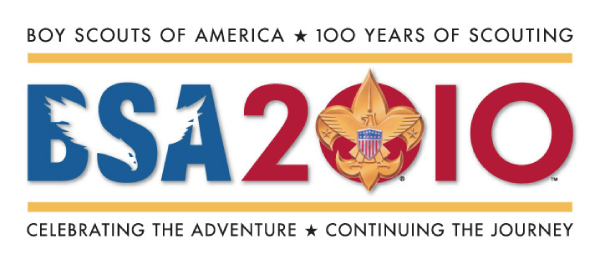
Scouting in the United States
Boy Scouts of America (BSA)
William Boyce. The Boy Scouts of America (BSA) was founded by Chicago publisher William Boyce on February 8, 1910. At that time in the US, there were several other loosely structured outdoor-oriented youth organizations, some using the name "Boy Scout" and some using other names, and there were already a number of troops in existence using some variation of the British Scout program. Boyce's key contribution was to organize the BSA as a business. He incorporated the organization (in Washington, DC, rather than Chicago), recruited key youth professionals (in particular from the YMCA) to design and operate the program, and he provided key funding for the infant organization.
Some of the early, non-BSA Scouting programs in the US included the US Boy Scout (founded in 1910 shortly after the BSA; see next paragraph), the Lone Scouts of America (founded in 1915 by BSA founder Boyce, who had become dissatisfied with the BSA, and created the LSA for boys living in isolated areas; the LSA merged with the BSA in the 1920s), and the Rhode Island Boy Scouts (RIBS, founded soon after the BSA in 1910, merging with the BSA in 1917, and existing today as the BSA's Narragansett Council). It is interesting that the BSA's Boys Life magazine was started by RIBS member Joseph Lane in 1911 (BSA purchased the magazine in 1912).
Early Actions. The new BSA quickly established a national office, developed a temporary handbook, sought out Baden-Powell's endorsement (which they got), and began to work to get a Congressional Charter from the US Congress (which they got in 1916). They also began an active campaign to absorb all other Scout-type youth organizations into the BSA. Indeed, only one such organization held out past 1912—publisher William Randolph Hearst's militaristic "US Boy Scout" (also called the "American Boy Scouts") organization (founded only three months after the BSA, and a member of the Order of World Scouts, a mostly British program in competition with Baden-Powell's program). Resorting to the federal courts, and aided by their Congressional Charter and testimony from Baden-Powell, the BSA obtained a favorable ruling against the "US Boy Scout" in 1919.
The Founders. Three people influenced the BSA's development more than any others: Ernest Thompson Seton, James West, and to a lesser extent, Daniel ("Uncle Dan") Beard.
Daniel Beard."Uncle Dan" Beard was beloved by millions of American Boy Scouts during his lifetime. A well-known artist and outdoorsman, he had founded a Scout-like organization called the Sons of Daniel Boone about 1905. While it had much in common with Boy Scouting, it lacked organizational structure (it was promoted through several magazines). It does not appear that Baden-Powell used any of Dan Beard's literature as he formulated his ideas for Boy Scouting.
Ernest Thompson Seton. Seton, a famous writer and artist, had founded a loosely structured boys' program called the Woodcraft Indians around 1901-02. Seton had also visited England in 1904, where he met with Baden-Powell and gave him a copy of his manual for the Woodcraft Indians. B-P used many of Seton's ideas as he developed his Boy Scouting program. Indeed, Seton's introduction to the Original Edition of the BSA's Boy Scout Handbook makes it clear that he considered himself to be the real founder of the World Scouting movement: "In 1904, I went to England to carry on the work [of fostering a "Woodcraft and Scouting movement"] there, and, knowing General R. S. S. Baden-Powell as the chief advocate of scouting in the British Army, invited him to cooperate with me, in making the movement popular. Accordingly, in 1908 he organized his Boy Scout movement, incorporating the principles of the [Woodcraft] Indians with other ethical features bearing on savings banks, fire drills, etc., as well as by giving it a partly military organization, and a carefully compiled and fascinating book." When William Boyce incorporated the Boy Scouts of America in 1910, Seton merged his Woodcraft Indians with the new organization and became the BSA's first Chief Scout (from 1910 to 1915).
James West. West was a Washington, DC, attorney active in juvenile cases. Recruited in 1911 as Executive Secretary, West soon changed his title to Chief Scout Executive. West created a well-organized national structure that was a key to the BSA's growth and reputation. Although he had intended to make Scouting only a temporary diversion from his legal career, West remained Chief Scout Executive from 1911 until his retirement in 1943.
Power Struggle. West and Seton soon found they had conflicting ideas on how Scouting should develop. Scouting Founder Seton thought of West as a simple administrator, and challenged West's authority to control the young program's development. West had the organization and power base, and forced Seton out in 1915 (and removed all of Seton's writing from the Boy Scout Handbook by the 14th printing in 1916). But Seton's contribution had been made, and American Scouting today owes much to both men.







